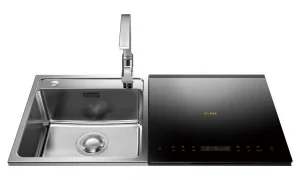Introduction
Augmented Reality (AR) has evolved from being a futuristic concept to a mainstream technology, and iOS devices have played a significant role in this transformation. With the introduction of ARKit by Apple, developers can create immersive and interactive AR experiences for iOS users. However, ARKit is not the only option available for iOS development. In this blog, we’ll dive into the world of Augmented Reality SDKs for iOS and explore the various tools and frameworks that can help you create exceptional AR applications.
- ARKit: Apple’s Native Framework
Apple’s ARKit is the most popular choice for iOS developers who want to incorporate AR features into their applications. It provides an extensive set of tools and capabilities to create AR experiences. ARKit supports features like 3D object recognition, plane detection, and world tracking. It’s ideal for those who want to leverage the full potential of Apple’s hardware and software integration.
Pros of ARKit:
- Native integration with iOS, ensuring optimal performance.
- A vast community of developers and resources for support.
- Continuous updates and improvements from Apple.
Cons of ARKit:
- Limited compatibility with non-Apple devices.
- Learning curve for beginners.
- ARCore: Google’s Augmented Reality SDK
While ARKit is iOS-centric, ARCore is Google’s response to augmented reality for Android and iOS. With ARCore, you can create AR apps that work across a range of devices. It offers similar features to ARKit, such as motion tracking, environmental understanding, and light estimation.
Pros of ARCore:
- Cross-platform support for both iOS and Android.
- Strong support from Google and a growing developer community.
- Access to Google’s extensive 3D content library.
Cons of ARCore:
- Not as tightly integrated with iOS as ARKit.
- May require additional work for iOS-specific features.
- Vuforia: A Powerful AR Development Platform
Vuforia is a widely used AR development platform that offers support for multiple platforms, including iOS. It provides tools for object recognition, cloud-based AR, and extended tracking. Vuforia is a go-to choice for developers who need to create AR applications with complex tracking and recognition requirements.
Pros of Vuforia:
- Extensive tracking and recognition capabilities.
- Cross-platform support, including iOS.
- Suitable for both beginners and experienced developers.
Cons of Vuforia:
- Licensing costs can be high for commercial use.
- May not have the same level of iOS integration as ARKit.
- ARToolKit: An Open-Source Option
ARToolKit is an open-source AR SDK that has been around for a while. It’s a versatile platform that supports iOS and other platforms. While it may not have the same level of corporate backing as ARKit or ARCore, it has a loyal developer community and is an excellent choice for projects with budget constraints.
Pros of ARToolKit:
- Open-source and free to use.
- Cross-platform support, including iOS.
- Active developer community and resources.
Cons of ARToolKit:
- May require more effort to achieve the same level of functionality as proprietary SDKs.
- Potentially limited support and updates compared to commercial options.
Conclusion
The world of augmented reality is constantly evolving, and the choice of an AR SDK for your iOS project depends on your specific requirements and constraints. If you want seamless integration with iOS and have access to the latest features, ARKit is the natural choice. However, if cross-platform compatibility or specific tracking features are crucial, options like ARCore, Vuforia, or ARToolKit might be better suited for your needs.
As you embark on your AR development journey for iOS, keep in mind that staying updated with the latest advancements and best practices is essential. Explore the documentation, communities, and tutorials related to your chosen SDK, and you’ll be well on your way to creating immersive and engaging AR experiences for iOS users.









































